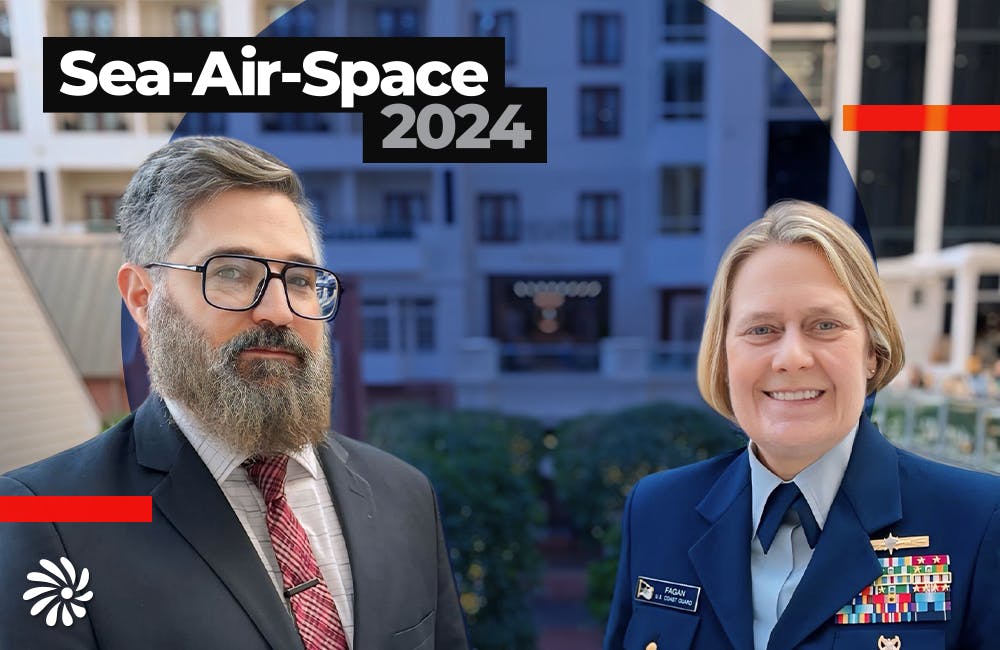Patent Programs For Federal Employees Can Support Recruitment Efforts
The government has long valued intellectual property, which accounts for about 41% of the nation’s GDP.

In a time when federal agencies are faced with a tough recruiting environment, patent programs for federal employees might be one way government can continue to compete with industry for tech talent.
While the United States Patent and Trademark Office (USPTO) is known for granting patents for private sector inventors, the agency works across government agencies in support of federal employee patent development.
“Patent activity within federal agencies can have a positive impact in solving societal challenges, as invention disclosures often promote follow-on invention and spur commercialization of the invention,” a USPTO spokesperson told GovCIO Media & Research.
Many inventions that are used every day grew out of projects at federal agencies, including the Defense Department, Department of Energy, NASA and the National Institutes of Health. These include the technology behind GPS, supercomputers, MRIs and the COVID-19 vaccine, for example.
USPTO has advanced and expanded its efforts to work across government to protect intellectual property and support federal employee inventors, ultimately allowing agencies the opportunity to compete with the private sector for talent. Through direct employee exchanges, for example, USPTO is able to provide ongoing expertise into the daily operations of federal agencies. These efforts also include interagency working groups, joint training and working within government to provide more programs to protect innovations.
“Federal scientists and researchers are motivated by their agency’s missions and to provide for the American people. Patenting and licensing innovative technology is one way that the federal government is able to invest in foundational research that can be commercialized by the private sector,” a USPTO spokesperson said.
Intellectual Property and Commercialization
The federal government has long had an interest in intellectual property (IP). According to a 2022 USPTO study, IP-related industries accounted for 41% of the gross domestic product (GDP) in 2019.
Public polices like grant programs, funding, patent protection, education efforts and regulatory support play a crucial role in fostering innovation and the development of technology and IP.
The FBI is one agency that currently has 22 patents through its Office of Research and Technology Applications (ORTA), noted Executive Assistant Director of the FBI Science and Technology Directorate Robert Brown at the AFCEA LEAPS Forum in May.
Many agencies across government have an ORTA, an office dedicated to commercializing technologies invented at federal laboratories.
The FBI’s program, established in 2020, allows FBI employees “to identify FBI inventions, protect government rights, and leverage the value of investments by collaborating with the public and private sectors to achieve mission objectives and drive the commercialization of technology.”
Since then, the office has seen a slew of benefits with the creation of critical products and services to support the agency mission, rewarding innovative employees and strengthening the national economy, according to an agency spokesperson.
For example, FBI researchers recently developed a patented canine training aid “with the capacity to absorb odors from chemical, biological and explosive materials. The polymer enables the canines to be trained on the true odor of these hazardous substances without the risk of harm to the canines, the handlers and the public,” the spokesperson said.
Harnessing Opportunities in AI
Emerging technologies around artificial intelligence are top of mind, especially for what that means for patent opportunities.
In 2022, USPTO launched the Artificial Intelligence and Emerging Technologies Partnership (AI/ET), which supports innovation in critical technologies. The partnership enables collaboration across the board, “by bringing together diverse stakeholders including scientists, attorneys, academics, and entrepreneurs, to share perspectives, experiences, and insights on the intersection of IP, AI and emerging technologies,” said a USPTO spokesperson.
Plus, the innovation opportunities in this emerging industry can help government attract needed tech talent while offering incentives for inventions.
“Allowing non-federal entities to retain the rights to inventions resulting from collaboration with federal government creates an incentive for these entities to work with government researchers to further the mission of the federal agency by developing and commercializing the resulting inventions,” according to a 2020 USPTO report.
AI and other emerging technologies have sparked a series of collaborative meetings around the patent eligibility of AI inventions, convergence of AI and AI inventorship.
“While the capabilities of today’s frontier technologies (including both predictive and generative AI) are impressive, there’s currently no such thing as ‘error-free AI.’ Therefore, our use of AI internally is carefully tailored to keep our agency’s expert workforce in the driver’s seat, by empowering them to use AI as one of many tools in administering our world-class IP system,” said a USPTO spokesperson.
Moving forward, USPTO is continuing to prioritize the integration of AI across the federal government.
“We are reimagining the USPTO of the future, an agency that issues, upholds, and protects robust and reliable IP rights that incentivize innovation and bring more ideas to market for and from all,” said USPTO Director Kathi Vidal in a June press release.
This is a carousel with manually rotating slides. Use Next and Previous buttons to navigate or jump to a slide with the slide dots
-

How Agencies are Upskilling the Workforce in AI
Federal officials are putting in place new training and education methods to ensure its overall workforce understands the technology.
3m read -

A Prepared Workforce is Key to Cyber Resiliency
Strong training strategies and emphasizing cyber hygiene basics enhance security practices at federal agencies.
2m read -

Navy Invests in Additive Manufacturing Workforce to Match Pentagon Strategy
DOD issued its Additive Manufacturing Strategy in 2021 to integrate with the private sector and create agile uses of the technology.
5m read -

Sea-Air-Space: Coast Guard Prioritizes Agility in the Face of Technological Change
Adm. Linda Fagan says the modern Coast Guard is to adjusting to the speed of technology.
10m watch








